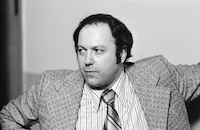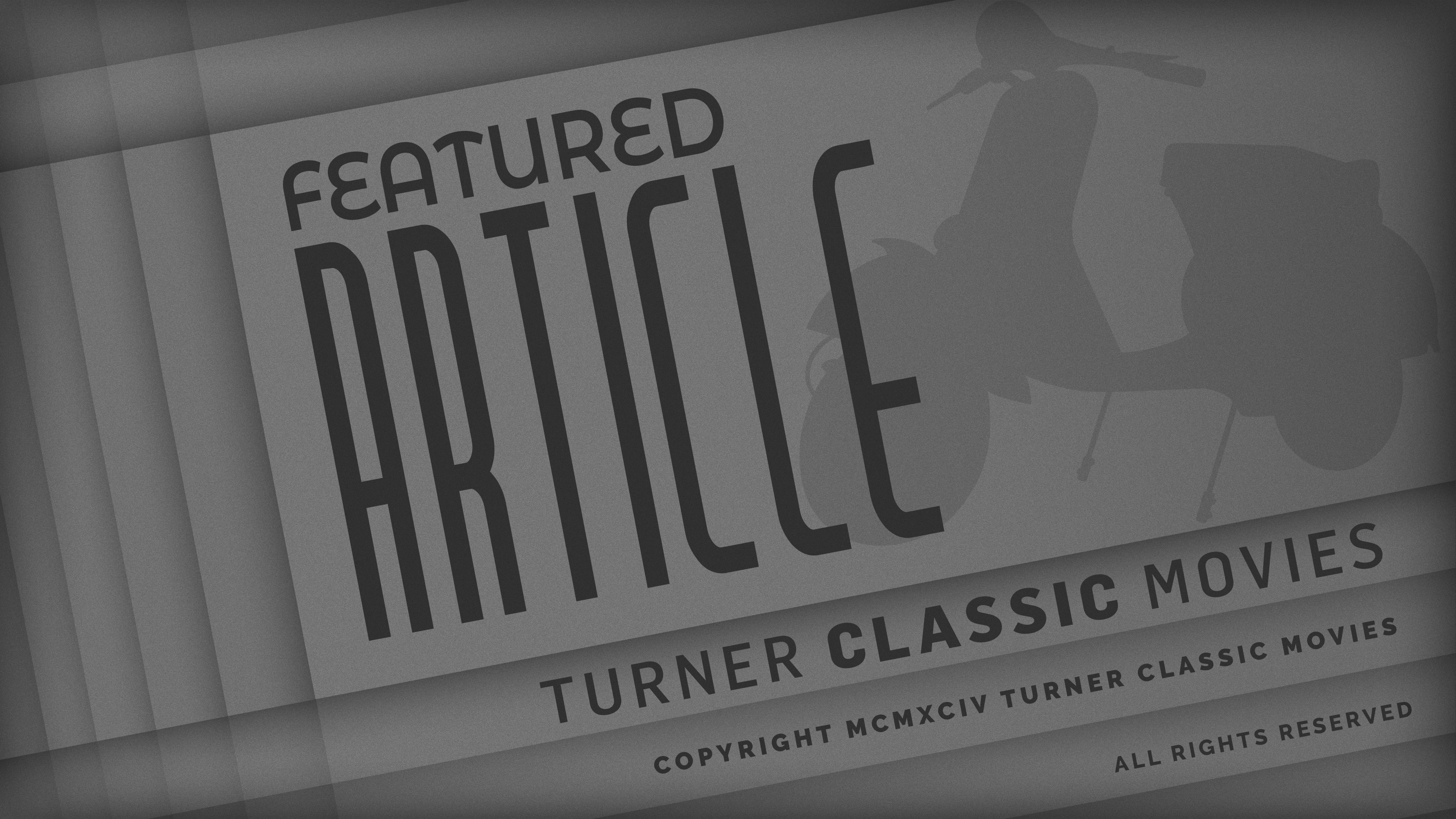Diabolique
Brief Synopsis
Cast & Crew
Jeremiah Chechik
Sharon Stone
Isabelle Adjani
Chazz Palminteri
Kathy Bates
Cory Pattak
Film Details
Technical Specs
Synopsis
Nicole and Mia are two very different women, but they have something in common. Both of them are sleeping with Guy Baran--and both of them are sick of his domination in their lives. Nicole is Guy's mistress. Sexy and self-assured, she was first drawn to Guy's magnetism--and then disgusted by his lies and selfishness. Mia is Guy's wife. A timid former nun with a weak heart, she is nearly suicidal over Guy's blatant infidelities, his constant cruel humiliation of her and his arrogant sexual demands. Then one day Nicole and Mia decide to free themselves from Guy's sadistic embrace once and for all. Nicole devises a murder scheme that seems foolproof, but in its aftermath Nicole and Mia each discover things about Guy--and about each other--that they'd never imagined. Then a brash, unconventional detective starts looking into Guy's disappearance. Finally, a terrifying series of clues begin to suggest that Guy may not be dead after all... and he may be coming back to deal with both of them.
Director
Jeremiah Chechik
Cast
Sharon Stone
Isabelle Adjani
Chazz Palminteri

Kathy Bates
Cory Pattak
Jesse Ross
Sophia Salguero
Zachary Mott

Allen Garfield
J.j. Abrams
Adam Hann-byrd
Stephen Liska
Bingo O'malley
Hank Stohl
Spalding Gray
Kate Young
James M Schneider
O'neal Compton
Clea Lewis
Diana Bellamy
Kevin Vinay
Jim Kisicki
Donal Logue

Shirley Knight
Crew
Louis J Abeln
Phil Abraham
Robert W Adams
Elton Ahi
Danny Aiello Iii
Cynthia Albert
Neils D Alpert
Maria Arago
Beth Armogida
Terry Arthur
Bryan Ashford
Bob Baker
Carmen Baker
Natalie Baker
Gary Barber
Mark A Barill
Trisha Barnhart
Craig Barron
David W Beattie
Norman Beck
Jeff Becker
Donna Belajac
David A Belasco
Bill W Benton
Gerard D Berger
Chuck Binder
Carol Bjornestad
Leah Blackwood
Kathryn A Borland
Vincent Borrelli
Pierre Bouileau
Linda Boykin-williams
David Boysen
Dennis Bradford
Lisa Bradley
Dennis J. Braun
Jim Bridges
Jim Brookshire
Keith Brzozowski
Patricia Buckley
Joseph A Buda
Sandra Budd
Robert Buncher
Brenda Bush
John N Butler
Brian Buzzelli
Christine Cantella
Chris Carptenter
Ben Carter
Roderick R Carter
Dan Casey
Patrick Caulfield
Harry Chalmers
Tim Chau
Dennis S Cinkan
Nora Cline
Henri-georges Clouzot
Steve Cohagan
K.c. Colwell
Craig Comstock
Thomas A Corbett
Tangi Crawford
Stephen Crowley
Julie B Crum
Rick Crumrine
Rick Crumrine
Meredith Cruse
Billy Cude
Gary Daigler
Gary Daigler
Pat Dames
Stephen Lee Davis
Sandy De Crescent
Lisa Campbell Demaine
Krystyna Demkowicz
James M Desmone
Leslie Dilley
Leslie Dilley
Fred Donatelli
Bill Donehue
Regis G Donehue
Elizabeth Dory
Michael Doyle
Susan Dudeck
Sharon A Dulaney
John Duncan
Chip Eccles
Randy Edelman
Randy Edelman
Randy Edelman
Robert C Edgar
Gregory L Edwards
Ray Edwards
Edwin A Effrein
Dennis Eger
Temujin Ekunfeo
Jim Emswiller
Donna Evans Merlo
Robert Fernandez
Ralph Ferraro
Carl D Filip
Wayne Fitzgerald
Bart Flaherty
Melissa Resch Fleet
Carmen Flores De Tanis
Jodi H Fonfa
C Romania Ford
Bill Franko
Eileen Garrigan
Thomas Garrigan
Albert Gasser
Peter Gause
Craig B Glaser
Kurt Glaser
Susan Glod
Avram D Gold
Gail Goldberg
Zoila Gomez
Walter Gorr
Timothy B Graham
Rich Green
Oda Groeschel
Peter F Guase
Brian Gunter
Craig Haagensen
Sarah Hackett
Kevin L Hanz
Barbara Harris
Kevin Harris
Kimberly Harris
Ben Harrison
William J Hart
Jim Heastings
Rose Heeter
D. M. Hemphill
Mario Herrera
Don J Hewitt
Christian P Hoerger
Laurie A Hoover
William Huemrich
Smith Harper Hutchings
George J Jaber
Alan R Jacques
Alan R Jacques
Peter James
Joe Janusek
Lila Javan
Nils C Jensen
Marla Jonas
Gregory Jones
Deborah Kazsimer
Dawn Keeser
C A Kelly
David Kern
Nancy Keslar
Jordan Klein
Marion Kolsby
Gary Kosko
Don Kraus
Girard Kuehn
Lara Lampenfield
John Lasalandra
Martin Lasowitz
Linda Latore
Michael Laudata
Michael Laudati
Scott T Leight
Jody Levin
Mark L Levin
Dominique Levy
Pamela Lewis
Carol Littleton
Richard Lorenzana
Susan M Lorenzana
Dennis Maitland
Gene Makrancy
Don Malouf
John P Mangan
Joseph A Manni
Richard P Marchand
Kristin Marshall
Kristin Marshall
David M R Martin
David M R Martin
Mike Matesic
Judy Matthews
Michael D Maxson
Catherine Mcconnell
Russ Mccormack
John L Mccormick
Thomas Titus Mccue
Michael J Mckee
Dennis Michaels
Barbara Miller
Michele M Misiti
Ronald A Modro
John G Morgan
John D Morrison
Nancy Mosser
John S Moyer
Film Details
Technical Specs
Articles
Pop Culture 101 - Diabolique
The central plot twist of Ira Levin's play Deathtrap (1982) is a direct lift from Diabolique.
The movie's shock killing paved the way for such movies as Psycho (1960).
The movie was remade several times, including Reflections of Murder, a 1974 made-for-TV-movie, directed by John Badham, starring Tuesday Weld, Joan Hackett and Sam Waterston and in 1996 for theatrical release, starring Sharon Stone and Isabelle Adjani.
The bathtub scene is mirrored in the book and movie versions of Stephen King's The Shining (1980). The discovered typewritten page, with Michel's name typed repeatedly in different formations, also shows up in the film version of The Shining with the now famous discovery by Wendy of Jack's "All Work and No Play Make Jack a Dull Boy" manuscripts.
by Greg Ferrara

Pop Culture 101 - Diabolique
Spalding Gray (1941-2004)
Gray was born in Barrington, Rhode Island on June 5, 1941, one of three sons born to Rockwell and Elizabeth Gray. He began pursuing an acting career at Emerson College in Boston. After graduation, he relocated to New York, where he acted in several plays in the late '60s and early '70s. He scored a breakthrough when he landed the lead role of Hoss in Sam Shepard's Off-Broadway hit Tooth of Crime in its 1973 New York premiere. Three years later he co-founded the avant-garde theatrical troupe, The Wooster Group with Willem Dafoe.
It was this period in the late '70s, when he was performing in Manhattan's underground theater circles, did Gray carve out his niche as a skilled monologist. His first formal monologue was about his childhood Sex and Death to the Age 14, performed at the Performing Garage in Manhattan in 1979; next came his adventures as a young university student Booze, Cars and College Girls in 1980; and the following year, he dealt with his chronicles as a struggling actor, A Personal History of the American Theater. These productions were all critical successes, and Gray soon became the darling of a small cult as his harrowing but funny takes on revealing the emotional and psychological cracks in his life brought some fresh air to the genre of performance art.
Although acting in small parts in film since the '70s, it wasn't until he garnered a role in The Killing Fields (1984), that he began to gain more prominent exposure. His experiences making The Killing Fields formed the basis of his one-man stage show Swimming to Cambodia which premiered on Off-Broadway in 1985. Both haunting and humorous, the plainsong sincerity of his performance exuded a raw immediacy and fragile power. Gray managed to relate his personal turmoil to larger issues of morality throughout the play, including absurdities in filmmaking, prostitution in Bangkok (where the movie was shot), and the genocidal reign of the Pol Pot. Gray won an Obie Award - the Off-Broadway's equivalent to the Tony Award - for his performance and two years later, his play was adapted by Jonathan Demme onto film, further broadening his acceptance as a unique and vital artistic talent.
After the success of Swimming to Cambodia, Gray found some work in the mainstream: Bette Midler's fiance in Beaches (1988), a regular part for one season as Fran Drescher's therapist in the CBS sitcom The Nanny (1989-90), a sardonic editor in Ron Howard's underrated comedy The Paper (1994), and a recent appearance as a doctor in Meg Ryan's romantic farce Kate & Leopold (2001). He also had two more of his monologues adapted to film: Monster in a Box (1992) and Gray's Anatomy (1996). Both films were further meditations on life and death done with the kind of biting personal wit that was the charming trademark of Gray.
His life took a sudden downturn when he suffered a frightening head-on car crash during a 2001 vacation in Ireland to celebrate his 60th birthday. He suffered a cracked skull, a broken hip and nerve damage to one foot and although he recovered physically, the incident left him traumatized. He tried jumping from a bridge near his Long Island home in October 2002. Family members, fearing for his safety, and well aware of his family history of mental illness (his mother committed suicide in 1967) convinced him to seek treatment in a Connecticut psychiatric hospital the following month.
Sadly, despite his release, Gary's mental outlook did not improve. He was last seen leaving his Manhattan apartment on January 10, and witnesses had reported a man fitting Gray's description look despondent and upset on the Staten Island Ferry that evening. He is survived by his spouse Kathleen Russo; two sons, Forrest and Theo; Russo's daughter from a previous relationship, Marissa; and two brothers, Rockwell and Channing.
by Michael T. Toole
Spalding Gray (1941-2004)
Quotes
Trivia
Miscellaneous Notes
Voted Best Foreign Language Film of the Year (shared with "Umberto D") by the 1955 New York Film Critics Association.
Voted One of the Year's Five Best Foreign Films by the 1955 National Board of Review.
Released in United States on Video July 30, 1996
Released in United States Spring March 22, 1996
Shown in New York City (Cinema Village as part of Janus Films 40th Anniversary Film Festival December 13, 1996 - January 2, 1997.
A 1974 television movie, "Reflections of Murder," was based on the novel, directed by John Badham and starring Tuesday Weld, Joan Hackett and Sam Waterston.
A 1993 television film, "House of Secrets," was inspired by the novel and starred Melissa Gilbert and Bruce Boxleitner.
Based upon Henri-Georges Clouzot's Hitchcockian thriller "Les Diaboliques" (France/1954), from the novel "Celle qui n'etait pas" by Pierre Boileau and Thomas Narcejac and screenplay by Clouzot, Jerome Geronimi, Frederic Grendel and Rene Masson. The film starred Simone Signoret, Paul Meurisse and Vera Clouzot.
Began shooting July 25, 1995.
Completed shooting October 28, 1995.
Remade in 1996, starring Sharon Stone and Isabelle Adjani.
Released in United States Spring March 22, 1996
Released in United States on Video July 30, 1996













